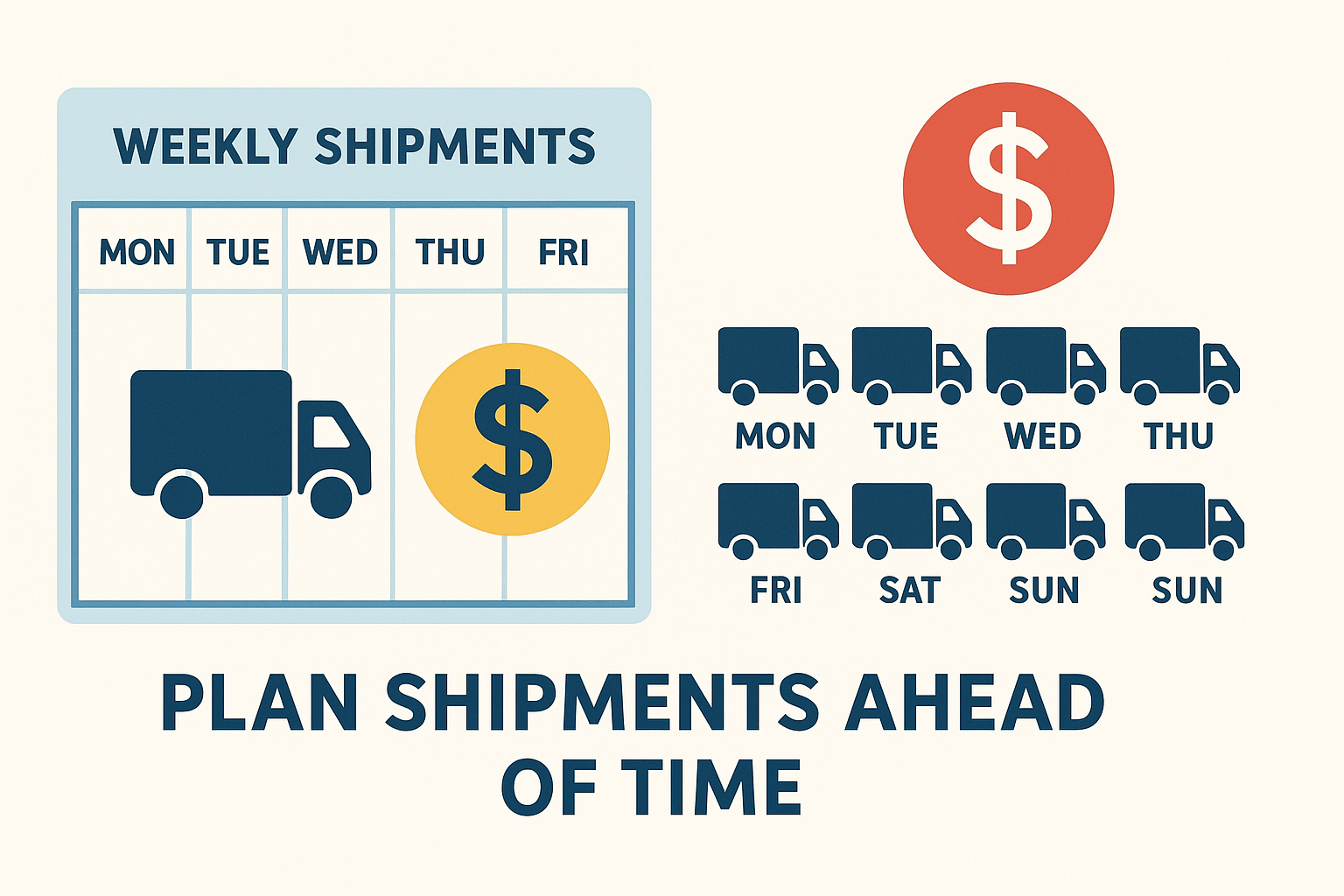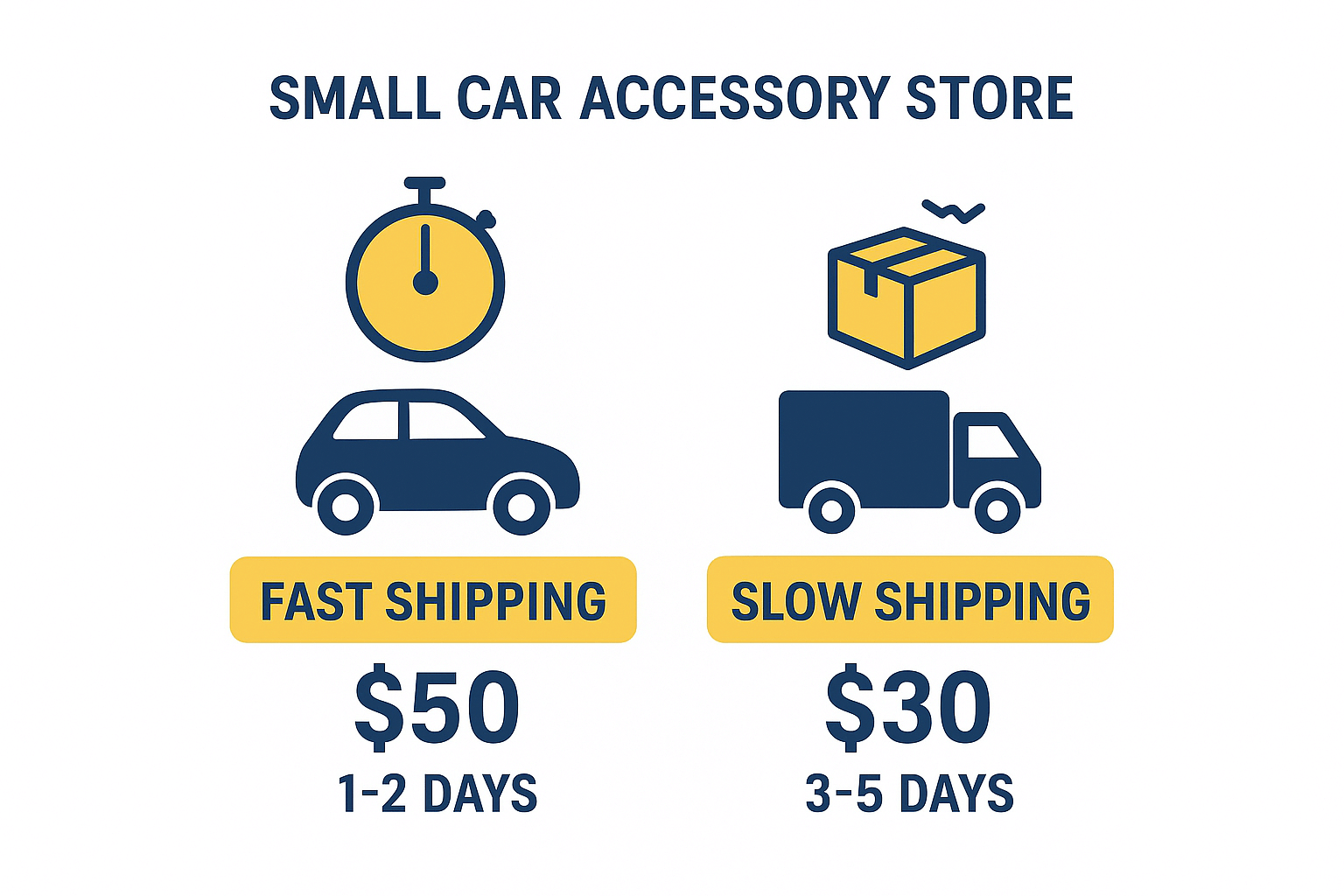Low freight rates may seem like a great way to save money, but cheap shipping often comes with hidden costs. This guide helps small businesses understand the risks, avoid delays or damages, and choose shipping options that balance cost and reliability. Learn how to protect your budget while keeping customers satisfied.
Shipping and logistics can make or break a small business, especially when budgets are tight. This guide breaks down how freight works, why cheap shipping can be risky, and practical strategies to save money. Learn how to choose reliable carriers, like YK Freight, and keep costs under control while delivering on time and keeping customers happy.
Table of Content:
- Why is freight shipping so crucial for small businesses?
- Why are low freight rates so tempting?
- Why is the cheapest rate not always the best choice?
- What risks come with cheap shipping?
- How can small businesses find the best freight rates?
- How does working with YK Freight help save money without sacrificing quality?
- What are some practical tips for budgeting shipping costs?
Why is freight shipping so crucial for small businesses?
Freight shipping is more than just moving goods from one place to another—it is the backbone of many small businesses. For companies that sell products online or ship vehicles, the way items are transported can directly affect both profits and customer satisfaction.
Imagine you run a small auto parts business. A customer orders a part and expects it to arrive quickly and in perfect condition. If your shipping is slow or unreliable, the customer might leave a negative review or cancel future orders. On the other hand, timely and safe delivery builds trust and keeps customers coming back.

For small businesses, shipping costs also have a big impact on the bottom line. Unlike large companies, small businesses often operate with tight budgets, meaning even small fluctuations in freight rates can eat into profits. Seasonal demand, fuel price changes, or limited carrier capacity can suddenly raise costs, leaving business owners scrambling to stay within budget.
Moreover, freight shipping is not just about cost—it affects overall business efficiency. Delays, lost shipments, or damaged goods can cause extra work, customer complaints, and additional expenses. In contrast, smooth logistics allow small businesses to focus on growth, marketing, and customer service instead of constantly solving shipping problems.
Why are low freight rates so tempting?
For small businesses, keeping shipping costs low can feel like a lifeline. When every dollar counts, finding a cheap shipping option seems like an easy way to save money and stay competitive.
Customers today expect fast, reliable, and affordable delivery. If you sell auto parts online, a buyer will often compare shipping costs before making a purchase. Offering low shipping rates—or at least not inflating them—can make the difference between winning the sale and losing it to a competitor.
At the same time, small businesses face constant pressure to stay profitable. Every shipment adds up: fuel, driver wages, packaging, and logistics services can quickly eat into margins. Naturally, business owners look for ways to cut costs wherever possible, and shipping is one of the most visible areas where savings seem achievable.
Take the example of a small car accessory store. A supplier offers a faster, more reliable shipping option at $50 per box, or a slower, cheaper option at $30. On a tight budget, $20 per shipment feels like a big win, especially when multiple shipments go out each week. The temptation to choose the cheaper option is understandable—it immediately lowers expenses and helps keep prices competitive for customers.
Another reason low freight rates are appealing is the illusion of simplicity. Many business owners assume the cheapest quote is automatically the best deal. It’s easy to see why: less spending upfront looks like smart management. In reality, this choice often comes with hidden costs, which we’ll explore in the next section.
Why is the cheapest rate not always the best choice?
It might seem obvious: lower shipping rates mean lower costs. But in the world of freight, the cheapest option can often create more problems than it solves. To understand why, it helps to know how freight rates are calculated.
Carriers consider many factors when setting a price. Fuel costs, the type of cargo, the shipment’s size and weight, the route, and even weather conditions all play a role. For example, shipping a heavy car part across a long distance will naturally cost more than sending a small accessory locally. Fast delivery options or specialized handling also add to the price.
But here’s the catch: some carriers lower rates to attract customers, especially in competitive markets. While this may sound like a good deal, these low rates often come with hidden trade-offs. A carrier cutting costs might reduce service quality, delay deliveries, or rely on overworked staff who are more likely to make mistakes.
Think about a small auto parts business again. You might see a shipping quote that is $20 cheaper than others and think you’re saving money. But if that carrier has slower transit times or poor handling practices, your shipments could arrive late, damaged, or even lost. The “savings” vanish once you factor in customer complaints, returns, and extra effort to fix the problems.
What risks come with cheap shipping?
Choosing the lowest possible shipping rates might seem smart at first, but it comes with real risks that can hurt your business in the long run. Small businesses, especially those shipping auto parts or vehicles, often discover that “cheap” can cost more than expected. Let’s look at the main issues.
Low service quality
When a carrier cuts rates to attract customers, service often suffers. You might deal with unresponsive customer support, unclear tracking updates, or mishandled packages. For example, a small business shipping car accessories may find that cheap carriers don’t provide accurate delivery notifications. When customers call asking where their order is, the business has to spend extra time resolving problems, which reduces efficiency and can hurt its reputation.
Low operational quality
Lower rates often mean lower pay for drivers or warehouse staff. This can lead to mistakes, slower handling, or less care in loading and unloading shipments. Imagine a small auto parts company sending fragile engine components. A cheap carrier’s warehouse workers may be overworked or poorly trained, increasing the risk of damaged items. Fixing or replacing these goods adds hidden costs that erase any initial savings.
Fast shipping costs more. Cheap shipping options frequently achieve their low rates by slowing down transit times or consolidating shipments with other deliveries. For a small business, this can mean orders arriving days or even weeks later than promised. Customers expecting timely delivery may cancel orders or leave negative reviews. Poor tracking from low-cost carriers also makes it hard to update customers or plan inventory, creating stress and extra work for the business.
How can small businesses find the best freight rates?
Finding the right freight rate isn’t just about picking the cheapest option—it’s about balancing cost, speed, and reliability. Small businesses can take practical steps to secure the best rates without risking service quality.
Research carriers before committing. Don’t just go for the first low quote you see. Compare multiple shipping providers, read reviews, and ask other small business owners about their experiences. Understanding a carrier’s reliability and reputation helps avoid unexpected costs from delays or damaged shipments.
Negotiate with YK Freight. Many small businesses don’t realize that freight rates are often flexible. By discussing your shipping volume and needs with YK Freight, you may unlock better rates or customized solutions. Even a small negotiation can save significant money over time, especially if you ship regularly.
Use freight brokers when needed. Brokers can help find the most cost-effective options by comparing multiple carriers. They can also handle paperwork and coordination, saving small business owners time and reducing errors that could lead to extra costs.
Avoid “too good to be true” deals. Extremely low rates often come with hidden risks: slower transit, poor handling, or unreliable tracking. A suspiciously cheap quote might seem appealing now but can end up costing much more in damage, delays, or customer complaints.
How does working with YK Freight help save money without sacrificing quality?
Working with YK Freight allows small businesses to strike the right balance between cost and service. Unlike carriers that offer extremely low rates but cut corners, YK Freight focuses on providing reliable shipping at fair prices.
Transparent rates. With YK Freight, you know exactly what you’re paying for. There are no hidden fees, unexpected surcharges, or confusing fine print. This transparency helps small businesses plan their budgets accurately and avoid unpleasant surprises.
Cargo tracking. Real-time tracking allows you and your customers to see where shipments are at any moment. For a small auto parts business, this means fewer customer calls, fewer worries about lost packages, and better planning for inventory.
Reliable transit times. YK Freight ensures shipments arrive when promised. By sticking to schedules, businesses can maintain good customer relationships, reduce stress, and avoid costly delays.
Step-by-step assistance. Small business owners don’t have to navigate logistics alone. YK Freight provides guidance throughout the shipping process—from quoting to pickup to delivery. This support reduces mistakes, improves efficiency, and saves time that can be used to grow the business.
What are some practical tips for budgeting shipping costs?
For small businesses, shipping can be one of the largest expenses—but smart planning can make a big difference. Here are some practical strategies to help manage costs without compromising service.
Plan shipments ahead of time. Last-minute shipping often comes with higher fees. By scheduling shipments in advance, you can take advantage of better rates and avoid rush charges. For example, a small auto parts store can plan weekly deliveries instead of sending items individually every day, saving money while keeping customers satisfied.

Consolidate shipments where possible. Combining multiple orders into a single shipment reduces the number of trips, saving on both transportation costs and packaging. For instance, instead of sending three small orders separately, a business can ship them together in one larger package, lowering the overall freight expense.
Compare different transportation methods. Not all shipping options are equal. Ground shipping is usually cheaper than air, and sometimes a slightly slower method still meets your delivery expectations. Small businesses should evaluate speed versus cost to find the most economical option that works for their customers.
Minimize returns and damaged goods. Damaged shipments or incorrect deliveries can create hidden costs that outweigh savings from cheap shipping. Investing in proper packaging, clear labeling, and careful handling reduces returns and keeps customers happy. For small auto businesses, using protective packaging for delicate parts can prevent unnecessary losses and extra shipping fees.
By using these strategies, small businesses can keep shipping costs under control while maintaining quality service. Thoughtful planning, smart consolidation, method comparison, and attention to safe handling turn shipping from a costly headache into a manageable, predictable part of the business.
Further Reading
Reducing Logistics Costs: Tips from YK Freight Experts
How to Cut Costs on Last Mile Delivery: Smart Tips for Savings
5 Benefits of 3PL for Small Businesses: Save Time, Money & Improve Shipping
What Is Cargo Consolidation and How It Saves You Money on Shipping







ASK YOUR QUESTIONS